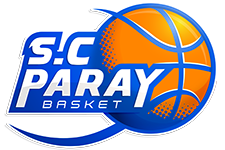Content
Following are some of the most frequently asked Chef DevOps interview questions in the interview, here are the answers for them. It provides a file, remote file, and cookbook file to manage files and a resource to manage directories. We need to test the cookbook to make sure that it doesn’t break down during production. It is converted to JSON when it gets installed in the server and returns the name, version, and other properties.
- Take part in hands-on practice, study for a certification, and much more – all personalized for you.
- It also reduces the dependency of the team or organization on a singular experienced programmer.
- Chef has Client-server architecture and it supports multiple platforms like Windows, Ubuntu, Centos, and Solaris etc.
- When you purchase a Certificate you get access to all course materials, including graded assignments.
- Some tools used for Configuration management are Chef, Puppet, Ansible, CF Engine, SaltStack, etc.
- Chef enables you to deploy software and applications across your entire infrastructure using a few lines of code and some clicks on buttons.
This allows the master systems to align the company infrastructure efficiently. This distributed approach makes Chef one of the most scalable automation tools in the world. Configuration Management https://remotemode.net/ keeps track of all the software and hardware-related information of an organization and it also repairs, deploys, and updates the entire application with its automated procedures.
When will I have access to the lectures and assignments?
This premium content can easily be customized to incorporate enterprise-specific compliance or security policies. DevOps approaches have long struggled with how best to integrate security. Traditional security methodologies are chef devops certification at odds with the rate of change introduced by DevOps practices, creating difficult trade-offs between risk and agility. Truly integrating
security practices into the software delivery lifecycle – or DevSecOps – promises more.
So adopting DevSecOps practices is a critical step for organizations to speed up their software delivery while reducing their risks. Filterable dashboards collecting configuration and compliance details for every datacenter, cloud provider, and environment managed in aggregated dashboards. In the fourth week of the course, we’ll learn the concepts of Chef-client and Chef-server in a detailed manner. Y the end of this week, we’ll be able to implement the installation of Chef Development Kit on Chef workstation. Chef allows you to dynamically provision and de-provision your infrastructure on demand to keep up with peaks in usage and traffic.
So, what exactly is Chef?
It enables new services and features to be deployed and updated more frequently, with little risk of downtime. With Chef, you can take advantage of all the flexibility and cost savings that cloud offers. All devices of your IT organization fluidly receive the same updates, software installations and deployments. By storing the current and desired states of your infrastructure, Chef can warrant that all your devices have unvarying states and ensure stability. The changes or actions that the worker nodes undergo are popularly called “state changes”. Any state change requires steps which are defined by a Chef cookbook created on the master device.
Let us take a scenario, suppose you have shifted your office into a different environment and you wanted your system administrator to install, update and deploy software on hundreds of system overnight. When the system engineer does this task manually it may cause Human errors and some software’s may not function properly. At this stage, we use Chef which is a powerful automated tool which transfers infrastructure into code.
